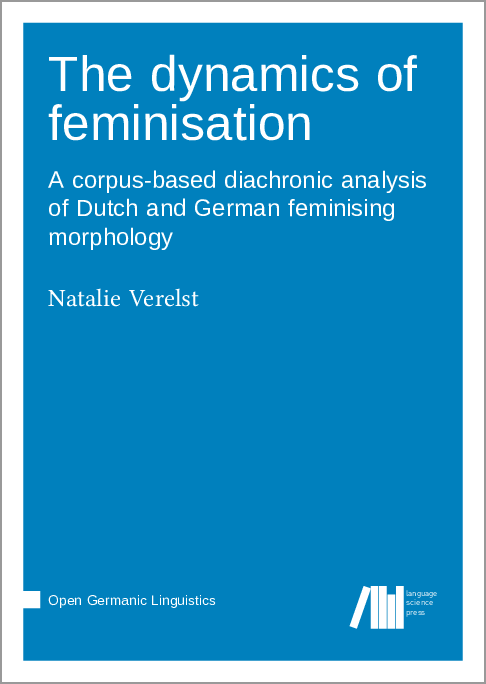We log anonymous usage statistics. Please read the privacy information for details.
Forthcoming: The dynamics of feminisation: A corpus-based diachronic analysis of Dutch and German feminising morphology
Synopsis
In this book, feminisation – the marking of female sex on personal nouns – in Dutch and German is investigated contrastively, diachronically, and corpus-linguistically. The corpus-based approach entails a theoretical and methodological shift from a structuralist and essentialist approach to the interplay of language and sex to a poststructuralist, usage-based and holistic perspective, which has long been lacking from the scientific domain of Gender Linguistics.
Starting from the observation that feminising morphology seems less frequently used in Dutch than in German in the same contexts, the goal is to examine how intra- and extralinguistic factors influence the choice for or against the use of these morphological patterns. These (only partly consciously made) choices are called differentiation and neutralisation, respectively. On the intralinguistic level, the link between the use of feminising morphology and properties of the grammatical gender system is investigated contrastively and diachronically, as well as more generally various semantic and pragmatic factors (semantics of the personal noun, animacy, referentiality) that may contribute to a more or less stable feminisation system. On the extralinguistic level, the effect of diverging views on gender-fair language use in both language areas, and within the respective areas (North vs. South for Dutch, East vs. West for German), stands out.
Drawing on diachronic corpus data, the effects of these factors are investigated empirically in three case studies by focusing on the form (Case Study I) and function (Case Study II: feminisation in human reference and Case Study III: feminisation in nonhuman reference) of feminising morphology. Both formally and functionally, Dutch feminisation is a complex system, whereas the German one is more uniform and straightforward. The use of feminising morphology in Dutch has been restricted since at least the second half of the 20th century, but less so in Northern than in Southern (Belgian) Dutch. By contrast, the tendency in German goes toward the consolidation of the feminisation system in all semantically female contexts, with the exception of language use in former East-German newspapers. Furthermore, as opposed to the Dutch feminisation system, the German system has taken on inflectional properties known as inherent inflection, the marking of which is semantically motivated. Examples of the use of feminising morphology in nonhuman reference fit in this analysis as well (e.g., die Partei als Gewinnerin ‘the party as the winner.fem’).
Significant impacting factors in the reduction of a feminisation system are indeed the gender system (feminisation is connected with a preserved masculine/feminine gender distinction, present in German but not in Dutch), referentiality (feminisation is an important referent-tracking instrument and therefore more likely found in referential contexts), semantics (in the case of reduction of feminisation, remnants of the system are observed in semantic contexts which foreground social gender), the newness of a personal noun in a language (neutralisation of new nouns is more common than neutralisation of long-established nouns), and the influence of language policy: the Dutch feminisation system, as well as the use of feminising morphology in the former GDR, has been subject to a significant effect of conscious neutralisation strategies as a means of gender-fair language use.



